| Tropical Trivia
by Christopher Montero and David Norman |
 |
LOOK ALIKES? NOT EXACTLY. To some of us, trying to distinguish a jaguar from a leopard is like trying to tell apart the cartoon squirrels Chip and Dale. But it really isn't that hard. Jaguars, which inhabit forests from Mexico to Argentina, are much stockier and their legs and tails are shorter. Also, their spots are larger and fewer in number than those of the leopard. |
| RADICAL RECYCLERS If it weren't for so many white land crabs, mangrove forests would not grow as fast as they do. Normally it takes a pretty long time for mangrove leaves that fall to the ground to decompose and release their minerals. But crabs can eat over two-thirds of these leaves and convert them into fertilizer-like droppings, ready to be absorbed by plants. Munch. Munch. |
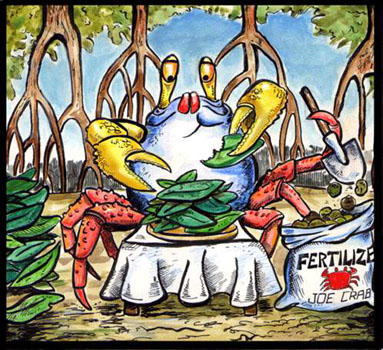 |
 |
A MAALOX MOMENT In an effort to help whistling ducks reproduce and increase their numbers, Costa Rican biologists put "fake" eggs - carved from wood and carefully painted - inside special nesting boxes on poles near wetlands. (This is a trick to get the ducks to use the boxes since hens prefer to lay where eggs are already present). Although raccoons occasionally rob duck eggs for food, biologists in Palo Verde Park were astonished to catch in one of their boxes a large boa constrictor that had swallowed their custom-made eggs! |
| SHACKLE THAT GRACKLE Their ebony bodies and keel-shaped tails reflect stunning purples, greens and blues under the sun. Yet these attractive birds - the great-tailed grackles - may be Central America's number one urban wildlife problem. Their booming populations (spurred by deforestation) and their habit of roosting in (and pooping from) trees in city parks clash head on with the time-honored tradition of late-afternoon socializing on park benches. |
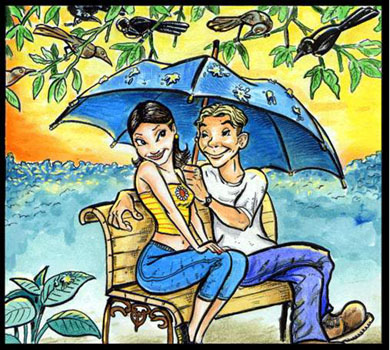 |
 |
FUNGUS FOOTHOLD Among the things that impressed Christopher Columbus the most when he sailed to tropical America were the lofty canopies and colossal trunks of the rainforest trees. Centuries later, scientists have discovered that the soils beneath many of these woodlands lack fertility. So how do these trees get the nutrients they need to grow so big? One reason is that their roots are covered with microscopic fungi called mycorrhizae. While the fungi obtain carbohydrates from the roots, the tree gets scarce nutrients, such as phosphorous, that can only be captured by fungi. |
| NOT QUITE A QUACK, NOT QUITE A HONK Among the spacious pasturelands in Costa Rica's Guanacaste Province you can find lagoons dotted with thousands of black-bellied whistling ducks. But some biologists assert that these "ducks" could just as easily be classified as geese. With their long legs and long necks, their habit of walking around on land, their powerful voices, and their upright stance, they sure seem more closely related to Mother Goose than to Donald and Daffy. |
 |
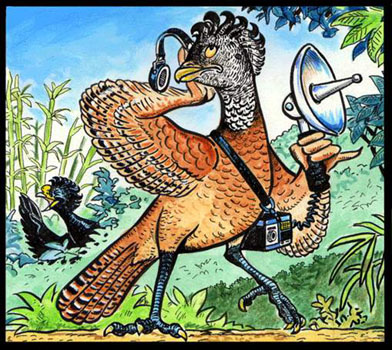 |
VENTRILOQUIST VIRTUOSO Strutting on the ground in tropical forests from Mexico to Colombia can be found a striking turkey-sized bird - the Great Curassow. The male, coal black with long curly head feathers and a yellow grape-like knob on his bill, emits a deep resonant hummmm so low we humans can barely hear it. This voice may be an adaptation for living in dense rainforest where a high-frequency call would be easily scattered and absorbed by the ground and foliage. |
| MIGHTY MOUSE You know mice don't eat just cheese, but did you know some dive into water to attack living prey? You can imagine the astonishment of Carlos Solano, a Costa Rican who raises trout in the Talamanca Mountains, when he surprised an Underwood's Water Mouse eating his rainbow trout hatchlings in a cement fish tank. These minnows were indeed a new taste for the rodents, since in Costa Rica's highlands fish are absent and the mouse's diet consists of the aquatic larvae of stoneflies and caddisflies. |
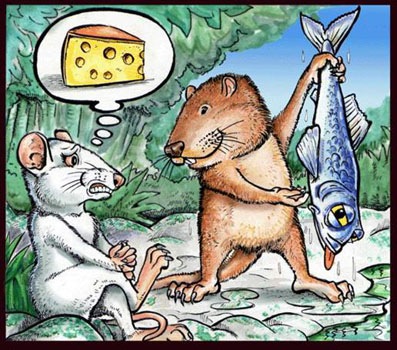 |
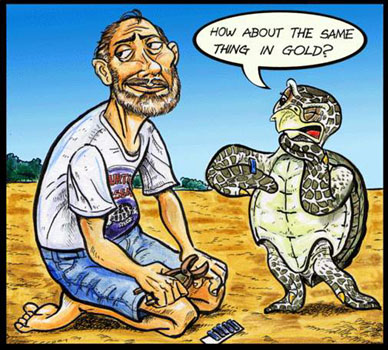 |
FLIPPER FINERY Scientists attach metal cattle ear tags to the flippers of sea turtles to learn about their movements and nesting habits. In Costa Rica over 100,000 green and ridley turtles got tagged in this way while crawling up beaches to nest in the 1970s and 1980s. Although the numbered tags often fall off in the ocean, many of the labeled turtles have been discovered by fishermen as far away as Mexico, Ecuador and Florida. |
| BREAKFAST OF�BAMBI? To most people the word �boa constrictor� conjures up images of steamy jungles in the Amazon. But in reality this snake species can be found as far north as Mexico and as far south as Argentina, where it goes by many names in different countries. In Mexico and Central America by its Nahuatl Indian name � masacuata � which means �deer snake�. Indeed, growing up to 12 feet long, it is one of the few snakes that will eat deer � but only at the fawn stage. |
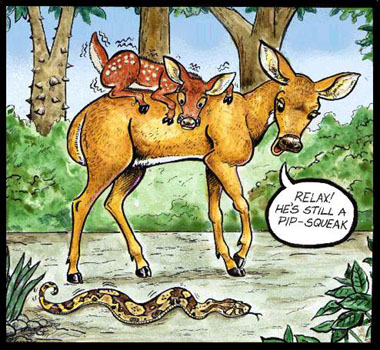 |
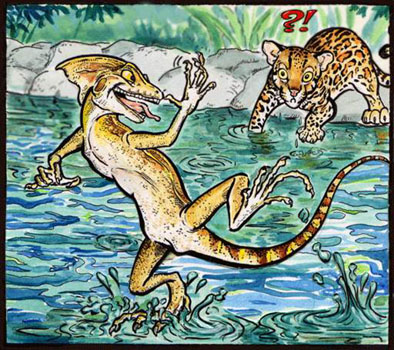 |
THE GREAT ESCAPE Did that thing just run over water? You bet it did, if it�s a basilisk or Jesus lizard. How does this tropical reptile accomplish such a remarkable feat? For starters, it has an extra row of scales alongside its toes for pushing itself off the water. And when its feet go into the water they create air bubbles that provide critical support. Another key is to move fast � the basilisk�s rear legs take about 20 steps a second! |
| IT�S NOT WHAT�S UP FRONT THAT COUNTS While most of us know that it is the boxer with the biggest fists who does the most damage, things are different when it comes to scorpions. Relatives of spiders and ticks, scorpions are mostly found in the tropics where they capture insects with their �claws� and then immobilize their victims by zapping them with their stinger with the tip of their tail. Scientists have discovered that those scorpions with the least impressive pincers are equipped with the most venomous stingers. |
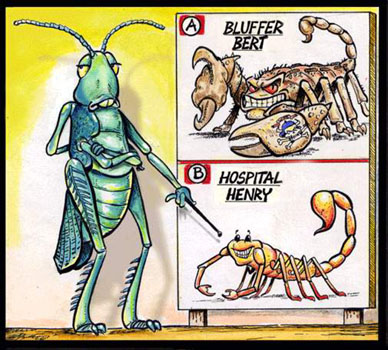 |
 |
BAT BUNGALOW Bats sleep in caves, tree hollows, and belfries, but those aren�t the only places they can be found during the day. In the rainforest of the America�s many of these flying mammals construct their own lodging by carefully biting along a line on each side of a palm leaf so that the sides of the leaf droop down to form a shelter. A half dozen bats can cuddle together inside their protective tents to escape rain and predators. |
Back to homepage
Site, images, and text Copyright 2005-2013 Christopher Montero and David Norman